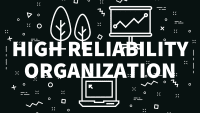When my youngest grandson was two years old he was determined to take control of his little world. “I do it myself,” he would loudly insist even when the “it” was something way beyond his capabilities. Needless to say, this power struggle took patience to work through. The adults in his life had to find a middle ground and so did he—eventually. We all had to temper our expectations to get past the impasses that inevitably occurred.
That little parenting lesson, while bringing a smile to my face years later, has significance even today. It goes beyond tying shoes or opening doors. It is instead a fitting reminder of how the challenges we face personally, and even professionally, can be addressed and often overcome by finding ways to work together.
As adults, we often still want to “do it ourselves” (or certainly “our way”) particularly when the stakes are high. But often, in the world of public policy, where power is the currency that defines success, doing it oneself may not be the best approach. That is especially true for nurses. Unlike many other interest groups, nursing’s organizational power is not rooted in the money its organizations contribute to Political Action Committees (PACs) and political candidates. It is also not due to executive positions nurses hold in key boardrooms and other decision-making tables. For the nursing profession, its power base is its size and what that size could mean if it were to coalesce into a coherent whole rather than a series of small entities each trying to do it themselves. In other words, if nurses began to collaborate effectively, and in ways that are sustainable, the power dynamic could change dramatically at statehouses and in Washington, D.C.
Nurses are the largest segment of the health care workforce and health care is a vital component of the national economy. Given those facts, nurses should be front and center at every policy table, but they generally are not. Instead, the profession readily divides itself into specialty groups and finds other ways to separate based on educational pathways or years of experience, or workplace settings. Ultimately these smaller segments of the much larger whole go it alone when it comes to policy making. In an arena like policy making where power is essential, money and numbers are often the currency upon which power is measured. For the nursing profession, where its power rests largely on its numbers, rather than having the power of a million voices, its numbers are reduced ten-fold. As a result, nursing’s policy priorities are much easier to ignore or discount.
That same scenario has been repeated for years. As a group, nurses do not avail themselves, as often or as effectively as they should, of the important tool that gives meaning to their numbers—the tool called “collaboration”.
Collaboration is generically defined in the Oxford English Dictionary as the act of working with someone to create something, to achieve a shared goal. It is by finding strength in partnerships that nursing can make its numbers work and enhance its power. In addition to building a power base, collaboration also provides an opportunity to learn from one another, both successes and mistakes, and it helps participants gain a better understanding of various perspectives.
Collaboration does not happen in a vacuum. To be its most effective, collaboration requires intentionality and strategic thinking. It should be a goal not a by-product or a fortunate coincidence. It also needs to be straightforward and simple. The most effective collaborations are agile enough to move quickly when required to do so, as often happens in the policy arena. Participants need to be able to trust each other and acknowledge the contributions of colleagues to achieving the overall goal.
Some questions to ask initially and repeatedly when involved in collaborative endeavors include:
- Is there a commitment to the collaborative concept—buy-in?
- Are there resources— financial, technology, and human that support collaboration?
- Is there a clarity of purpose—what is the immediate goal? What is the long-term goal?
- Is there a level of trust and integrity that participants can expect from each other?
- Are there specific delineated roles to play and jobs to do? Is everyone doing something?
- Are participants willing to share the credit (and the blame) even when it is tempting to do otherwise?
None of this can or will happen overnight. When success does not occur as quickly as some might wish, it is easy to walk away. Collaborators must resist taking the easy way out. Instead, they must embrace the idea that the outcome is worth the struggle to create a solid lasting collaborative infrastructure. While it won’t bear fruit overnight, the joining of forces within nursing will lead to a more effective presence for nurses at policy making tables. The victories that school nurses, or emergency nurses, or advanced practice nurses achieve collectively at those tables will make the entire profession stronger. In addition, that intraprofessional unity will help address the many serious challenges facing the health care system as a collective. The policy table is where nurses must find a seat and have a voice. “I do it myself”, will not result in an outcome that truly benefits those who rely on access to affordable health care to reach their full human potential.
On a personal note, I have worked in health policy for the bulk of my nursing career and have been part of several collaborations, two of which stand out in my mind. The first was in the 1980’s when the law defining nursing practice was badly in need of revision, and nurses in Ohio were fighting among themselves about entry level education. The Coalition for Revision of the Nurse Practice Act was the vision of then Ohio Board of Nursing Executive Director, Rosa Lee Weinert. She gathered nurses from many specialty groups and held the Coalition together for eight years, the time it took to finally get a new law enacted, over the objections of physicians who did not believe nurses assessed or rendered nursing diagnoses.
About 20 years later I was involved with something that came to be known as Nursing 2015, a collaboration that included the Ohio Nurses Association, the Ohio Hospital Association, and the Ohio Organization of Nurse Executives. This unlikely group managed to overcome many obstacles to find common ground that led to enactment of HB 346, a bill that established safe staffing standards for Ohio’s hospitals.
Neither of these collective efforts survived in the long run, which in hindsight is unfortunate. But their very existence is proof of what is possible and how these collaborations can be the path towards effective advocacy for the nursing profession in Ohio and elsewhere.

























